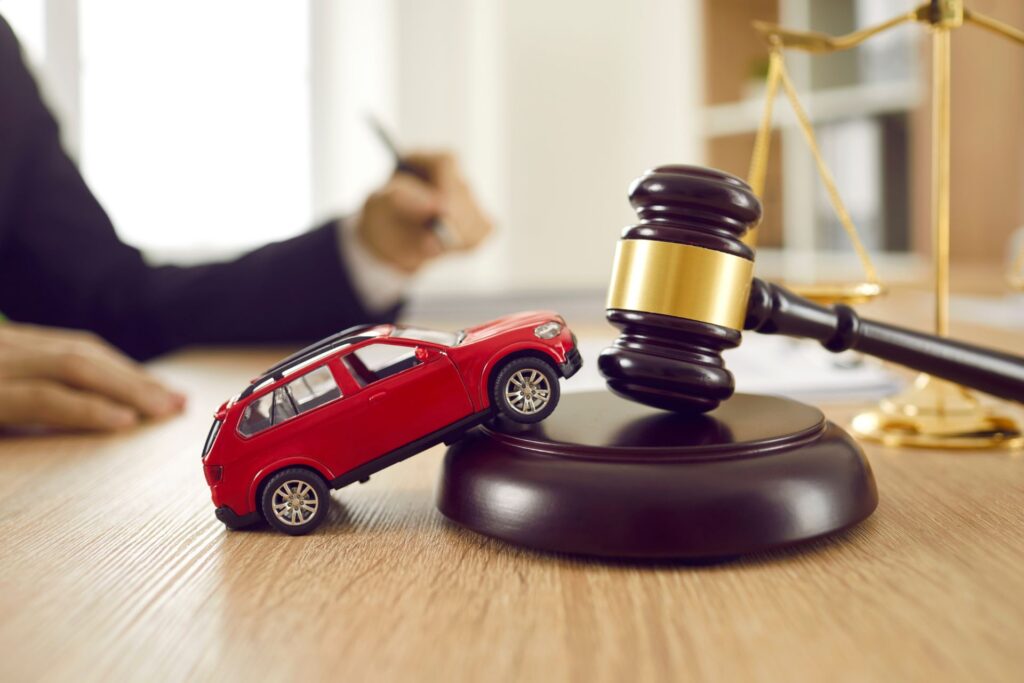Now Reading: Driving Tips to Help You Prevent Rear-End Collisions
-
01
Driving Tips to Help You Prevent Rear-End Collisions

Driving Tips to Help You Prevent Rear-End Collisions
According to statistics, 30 % of accidents are rear-end collisions, making them among the most common types of road accidents. While they may be regarded as fender benders, rear-end crashes can cause serious injuries to drivers and passengers.
As a driver, it’s your responsibility to protect yourself and your passengers by being careful on the road. Though you can’t change how other drivers behave, you can control your own driving to avoid being in a rear-end crash.
Read on to learn why most rear-end crashes happen and some helpful driving tips that you can use to reduce your risk of being involved in such accidents.
Factors That Increase the Risk of Rear-End Collisions
In most cases, the driver behind is the one who’s at fault in a rear-end crash. That’s because they have the most control over preventing the collision. They’re supposed to keep a safe distance from the vehicle ahead to allow for sudden braking. Some of the common factors that increase the risk of rear-end collisions include:
- Speeding: Speeding is the leading cause of most types of road accidents. The faster a car is going, the harder it is for the driver to control it. A speeding motorist would typically need at least three car lengths to brake if the vehicle in front comes to a sudden stop. The force of impact from a speeding car can cause a serious rear-end collision, resulting in life-threatening injuries.
- Distracted driving: Most rear-end collisions happen when a driver takes their eyes off the road and focuses on something else, such as eating, talking on the phone, or texting. A distracted driver may not react quickly enough if traffic slows down, resulting in a rear-end collision.
- Tailgating: Tailgating is when a driver follows a vehicle too closely, leaving no room to stop quickly if needed.
- Driving under the influence: Driving under the influence of alcohol or other drugs can impair your ability to make a judgment and react as needed, making it easy to rear-end another vehicle.
How to Prevent a Rear-End Collision
While you can’t prevent an accident from happening, you can take specific measures to help reduce your chances of being rear-ended or rear-ending someone else. These measures include:
Paying Attention
The best way to avoid a rear-end collision is by always paying attention while driving. This means keeping your eyes on the road, your hands on the steering wheel, and your mind alert. By being aware of your surroundings, you will be able to stop when the vehicle ahead of you suddenly breaks.
Staying Alert Around Certain Vehicles
Being around certain vehicles increases your odds of a rear-end collision. Vehicles like trailers or buses, for instance, can block your vision, making it difficult to see an upcoming hazard or stop sign. You should also be careful if you’re following a vehicle that stops frequently. Be patient and give them space to allow you to hit your brakes when they stop suddenly.
Driving at a Safe Speed
It’s easy to rear-end someone if you’re driving over the speed limit or faster than surrounding traffic. That’s because the faster you drive, the greater your stopping distance will be. You should, therefore, drive at a comfortable speed that allows you to react to hazards safely.
You should also avoid speeding when the weather conditions are not favorable, such as when it’s foggy, snowing, or raining heavily. Speeding in bad weather increases the risk of losing control of your vehicle. You’re also more likely to tailgate other vehicles, which increases your risk of causing a rear-end collision.
Gently Apply Your Brakes When Approaching Red Lights or Stop Signs
In most sudden braking accidents, the driver behind is considered at fault because they failed to maintain a safe braking distance. However, there are cases where the driver in front suddenly applies brakes and causes rear-end collisions.
If you’re approaching a red light or a stop sign, you should slow down to give enough time to those behind you to react.
Give Other Vehicles Space
Always give other vehicles plenty of space, especially if you’re driving on a busy highway. This gives you ample time to brake when the vehicle ahead stops suddenly. A great rule of thumb is to leave at least two seconds between you and the vehicle ahead. Here is a formula that you can use to check whether you have two seconds:
- Pick out a stationary object along the road
- Count two seconds from the time the vehicle ahead passes that object
- If you pass the object before two seconds elapse, then you’re following too closely. As such, you should give the vehicle ahead more space by slowing down.
Avoiding Dangerous Parking
You should always park your car in a safe spot to avoid getting hit by another vehicle.
Many collisions occur when a vehicle parked on the side of the road is rear-ended. That’s why parking along the road is illegal unless there is an emergency or the area is designated for parking. If you have to stop on the roadside for an emergency, park as far away from traffic as possible. You should also activate your flashers and place emergency warning signs to let oncoming traffic know that you have an emergency.
Observing Lane Discipline
You should keep your vehicle centered in its lane and avoid changing lanes unnecessarily, especially if you’re driving on a busy highway. Swerving or sudden lane changes can confuse other drivers and increase the risk of a rear-end collision.
To avoid a rear-end crash, always stay in your lane and change lanes only when necessary. You should also stay visible to other drivers, especially large vehicles like trucks and buses. If you need to overtake the vehicle ahead, do so when it’s safe and signal in advance.
Stay Safe on the Road
Rear-end collisions are common, but they’re also easy to avoid. Unlike other types of accidents, it’s easy to anticipate a rear-end crash and react accordingly. Some measures that you can take to avoid a rear-end collision include paying attention on the road, observing lane discipline, avoiding dangerous parking, and giving other vehicles space. By driving safely, you’re not only protecting yourself but other road users as well.









